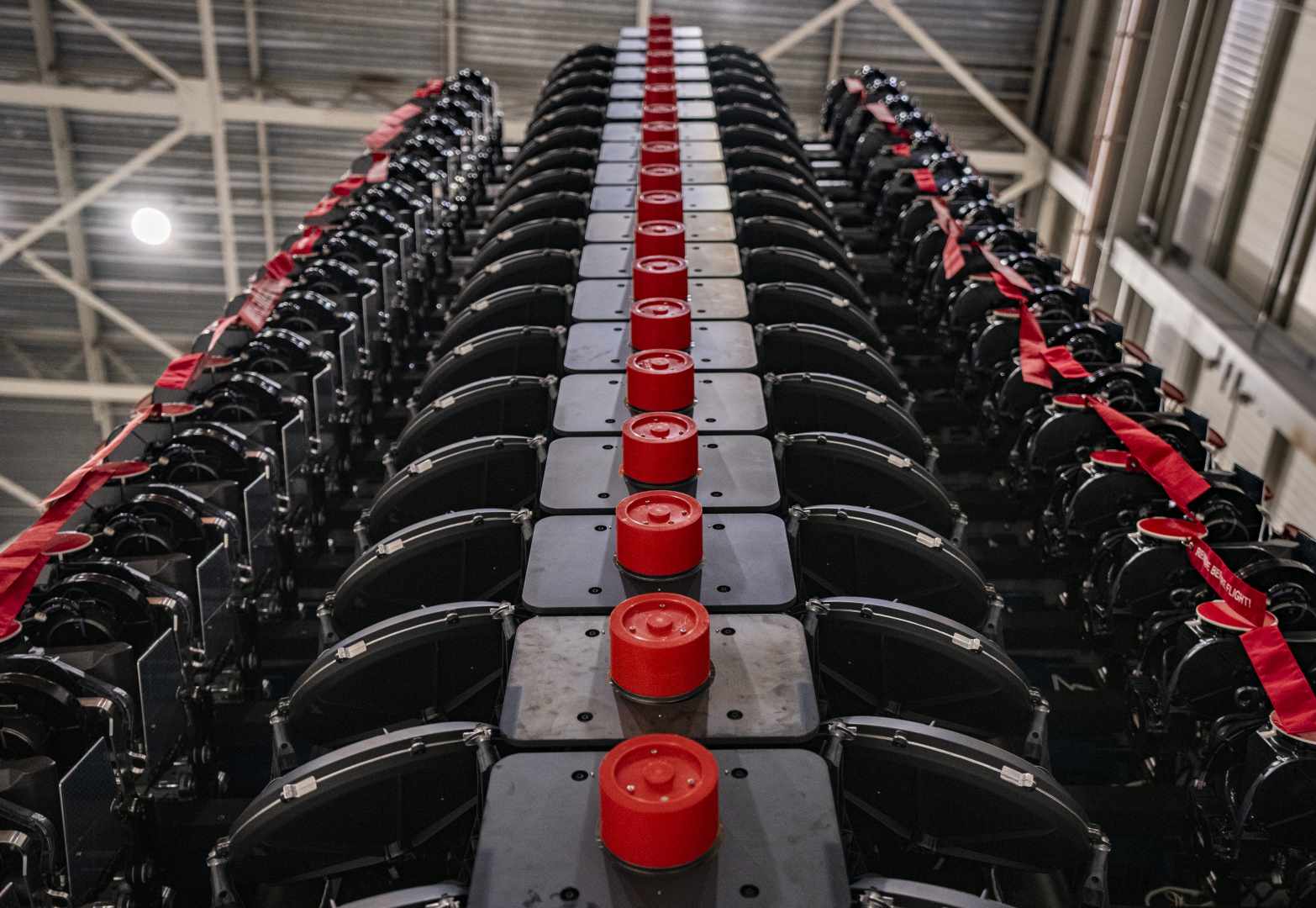
“Cosmonautics Day”—the day when Russia’s Yuri Gagarin became the first human to sever the shackles of Earth and enter space, way back in 1961—has been a celebratory occasion for more than six decades. In human spaceflight, 12 April also saw two Space Shuttle launches, including the fleet’s maiden orbital voyage in 1981, but uncrewed flights on the great day itself have proven sparser over the years. That changed at 9:40 p.m. EDT Friday, when SpaceX launched its first-ever Cosmonautics Day mission and a record-setting Falcon 9 became the first booster to reach a life-leading 20th flight.


Flying less than a month since her most recent (19th) mission—and the 25th SpaceX flight of the year—was B1062, which entered service back in November 2020 to lift the fourth Block III Global Positioning System (GPS III-04) navigation and timing satellite to Medium Earth Orbit (MEO) for the U.S. Space Force, followed by GPS III-05 in June of 2021. And during 2022, she recorded eight missions, the highest recorded by a single Falcon 9, notably flying twice in April of that year alone and setting a new empirical record (still unbroken) of only 21 days between flights by the same orbital-class booster.
B1062 is among a handful of vehicles to have launched two human crews. She flew the historic, all-civilian Inspiration4 crew of Shift4Payments billionaire Jared “Rook” Isaacman, Sian Proctor, Chris Sembroski and Hayley Arceneaux in September 2021 and launched Ax-1 astronauts Mike Lopez-Alegria, Larry Connor, Mark Pathy and Eytan Stibbe on the first all-private ISS mission by AxiomSpace, Inc., in April 2022.


Added to those impressive credentials, B1062 has now lifted more than 500 Starlink internet communications satellites on 13 missions, plus a pair of geostationary-bound communications satellites—Egypt’s Nilesat-301 in June 2022 and Saudi Arabia’s Arabsat-7B (also known as BADR-8) last May—as well as 40 broadband satellites for London, England-based OneWeb. All but one of her 20 missions ended with pinpoint-accuracy Autonomous Spaceport Drone Ship (ASDS) touchdowns, making B1062, as of now, the Falcon 9 record-holder for the greatest number of successful landings offshore.
Looking back, it is remarkable in the extreme that boosters have reached such high levels of reusability in a comparatively short timeframe. Only as recently as March 2017 did SpaceX reuse a once-before-flown Falcon 9 core for a second launch.


Those figures climbed rapidly as boosters scored steadily ascending numbers of missions and cemented gradually growing levels of maturity. Boosters achieved third flights for the first time in December 2018, fourth in November 2019, fifth in March 2020, sixth in August 2020, seventh in November 2020, eighth in January 2021, ninth in March 2021, tenth in May 2021, eleventh in December 2021, twelfth in March 2022, thirteenth in June 2022 and fourteenth and fifteenth in September and December 2022.
With boosters initially certified by SpaceX only for 15 missions, the “active” status of two fleet-leaders was paused for six months as recertification got underway to extend their operational life spans to as many as 20 flights. Veteran B1058 went on to record a record-smashing sixteenth mission last July, a seventeenth in September, an eighteenth in November and a nineteenth a few days before Christmas.


Sadly, B1058’s nineteenth launch proved her last, for although the mission was successful in entirety, rough seas and winds caused her to topple on the deck of the drone ship during her post-flight transit back to port and she was lost. Since then, in February and March three other boosters equaled her 19-launch record and doubtless the SpaceX teams responsible for processing them must have been chomping at the bit to be first to reach No. 20.
The identity of B1062 as the next fleet-leader was announced a day or so prior to launch, with a broad, 3.5-hour “window” from 9:22 p.m. EDT Friday through 12:48 a.m. EDT Saturday available to fly, with additional backup opportunities on Saturday evening. In readiness for its role in recovering the first-stage booster, the drone ship “A Shortfall of Gravitas” departed Port Canaveral last Wednesday.


According to the 45th Weather Squadron at Patrick Space Force Base, conditions were predicted to be upwards of 95-percent-favorable for both launch attempts on Friday and Saturday nights. “A strong area of high pressure will slide in by Friday, bringing ideal weather through the weekend,” it noted. “Westerly winds will be breezy Friday evening but are expected to remain below liftoff constraints. There are no significant launch weather concerns for either the primary or backup days.”
Laden with 23 Starlinks, B1062 roared into the Florida darkness at 9:40 p.m. EDT, a few minutes into Friday’s launch window, lifting her 13th batch of these flat-packed internet communications satellites into orbit. All told, across her twenty flights, she has now transported in excess of 500 discrete payloads, crewed and uncrewed, off the Home Planet.


Her job done, she separated from the Falcon 9 stack at 2.5 minutes into last night’s historic ascent and returned with characteristic grace to land on ASOG’s waiting deck. Meanwhile, the second stage executed a six-minute “burn” of its single engine to deploy the Starlinks at 65 minutes and 13 seconds after liftoff.
As a network, Starlink enables high-speed and low-latency internet provision to over 70 sovereign nations and international markets in North and South America, Europe, Asia, Oceania and Africa. Earlier this week, the Hawthorne, Calif.-headquartered launch services provider announced that Starlink connectivity is now available in Albania, bringing to 74 the total number of sovereign nations or regions to receive coverage.


The downsized V2 Mini satellites, first flown in February of last year, boast three to four times greater “usable” bandwidth than earlier Starlink iterations. “V2 Minis include key technologies—such as more powerful phased-array antennas and the use of E-Band for backhaul—which will allow Starlink to provide 4x more capacity per satellite than earlier iterations,” SpaceX explained. “Among other enhancements, V2 Minis are equipped with new argon Hall thrusters for on-orbit maneuvering.”
Florida-based intercity operator Brightline adopted Starlink on its trains in 2023, the first passenger rail service in the world to do so. Additionally, El Salvador’s Ministry of Education has begun integrating Starlink capability into its schools to help close the digital divide between urban and remote rural communities and 50 Rwandan schools are now connected via Starlink’s high-speed internet service.


And in January, SpaceX lofted its first six “Direct-to-Cell” Starlinks, which permit mobile network providers to offer “seamless global access to texting, calling and browsing”, whether “on land, lakes or coastal waters”, without the need to change hardware or firmware. Within six days of that first launch, SpaceX engineers sent and received their first text messages via Direct-to-Cell and as of this month Starlink reportedly has about 2.7 million registered subscribers or customers worldwide.







